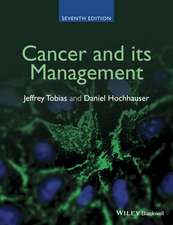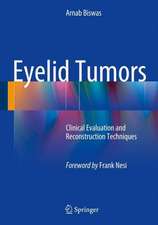Short-Term Test Systems for Detecting Carcinogens
Editat de K. H. Norpothen Limba Engleză Paperback – 14 noi 2011
Preț: 726.68 lei
Preț vechi: 764.93 lei
-5% Nou
Puncte Express: 1090
Preț estimativ în valută:
139.06€ • 144.31$ • 116.24£
139.06€ • 144.31$ • 116.24£
Carte tipărită la comandă
Livrare economică 17-31 martie
Preluare comenzi: 021 569.72.76
Specificații
ISBN-13: 9783642672040
ISBN-10: 3642672043
Pagini: 436
Ilustrații: XII, 420 p.
Dimensiuni: 170 x 244 x 23 mm
Greutate: 0.69 kg
Ediția:Softcover reprint of the original 1st ed. 1980
Editura: Springer Berlin, Heidelberg
Colecția Springer
Locul publicării:Berlin, Heidelberg, Germany
ISBN-10: 3642672043
Pagini: 436
Ilustrații: XII, 420 p.
Dimensiuni: 170 x 244 x 23 mm
Greutate: 0.69 kg
Ediția:Softcover reprint of the original 1st ed. 1980
Editura: Springer Berlin, Heidelberg
Colecția Springer
Locul publicării:Berlin, Heidelberg, Germany
Public țintă
ResearchDescriere
The varying cancer incidence from country to country and region to region suggests that en vironmental factors play a considerable role in the aetiology of cancer. Whether these factors in the environment moderate the effect of car cinogenic chemicals or whether they might them selves be carcinogenic is not known at the present time. What is known is that there are various chemicals, both naturally occurring and man-made, which can induce cancer in man. In the Western world estimates vary as to how much cancer is occupational in origin; the figures range from 1% to 40%. It is our feeling that probably about 10% of cancer has a direct oc cupational origin. Nevertheless this number is considerable and it behoves us therefore to identify those chemicals which are carcinogenic and to reduce human exposure. Recent work on the mode of action of carcinogenic chemicals suggests that the majority exert their effect through an activation step to give elec trophilic metabolites. Such metabolites have as a common feature the ability to react with cel lular nucleophiles to give covalently bound products. Such reaction will occur after carcino gen treatment of animals with nucleic acids par ticularly in target organs. It is reaction with nucleic acids that provides the basis of a num ber of short-term tests for carcinogens, since the basic composition of DNA is similar in micro-organisms and in human cells.
Cuprins
Opening.- Section I Significance and Validity of Short-Term Tests for Detecting Carcinogens — General onsiderations.- In Vitro Assays to Predict Carcinogenicity?.- Microbial Assays: Evaluation and Application to the Elucidation of the Etiology of Colon Cancer.- Validity of Bacterial Short-Term Tests for the Detection of Chemical Carcinogens.- The Significance and Interpretation of in Vitro Carcinogenicity Assay Results.- Some Aspects of Bacterial Mutagenicity Testing.- Mutagenicity of Closely Related Carcinogenic and Noncarcinogenic Compounds Using Various Metabolizing Systems and Target Cells.- Possibilities for an Adequate Stepwise Carcinogenicity Testing Procedure.- Section II Correlations Between in Vitro and in Vivo Results-Investigations Using Different Test Systems.- Validity of Test Systems Used in the Detection of Mutagenic and Carcinogenic Properties of Chemical Substances.- Quantitative Molecular Dosimetry of Ethyl Methanesulfonate (EMS) in Several Genetic Test Systems.- Comparative Results of Short-Term in Vitro and in Vivo Mutagenicity Tests Obtained with Selected Environmental Chemicals.- Correlations Between Primary Effects of Xenobiotics in Liver Cells in Vitro and Their Mutagenicity and Carcinogenicity in Vivo.- The Microbial Host-Mediated Assay in Comparison with in Vitro Systems: Problems of Evaluation, Predictive Value and Practical Application.- Mutagenic and Carcinogenic Effects of Antimetabolites.- Section III Use of Mammalian Cells for Short-Term Testing of Carcinogens.- Mutagen-Metabolizing Enzymes in Mammalian Cell Cultures: Possibilities and Limitations for Mutagenicity Screening.- Studies on the Detection of Carcinogens Using a Mammalian Cell Transformation Assay with Liver Homogenate Activation.- Effects of Different Polycyclic Aromatic Hydrocarbons on Cultured Fetal Hamster Lung Cells and Tracheal Expiants.- Malignant Transformation of Mammalian Cells in Culture by Chemical Carcinogens.- Section IV Methodological Aspects with Emphasis on Standardisation of Test Procedures and Interpretation of Test Results.- Metabolizing Systems Used for in Vitro Mutagenicity Testing.- Factors Modulating Mutagenicity in Microbial Tests.- Oxygenase-Independent Activations of Carcinogens.- Some Practical Problems Experienced in Attempts to Predict Carcinogenicity from Short-Term Tests.- Interlaboratory Variations of Test Results.- Biostatistics of Ames-Test Data.- Section V New Experiences with Short-Term Tests — Response of Some Environmental Carcinogens.- Mutagenic Effects of Chlorinated Aliphatic Hydrocarbons; Influence of Metabolic Activation and Inactivation.- Comparative Mutagenic Evaluation of Some Industrial Compounds.- Test Systems for Detection of Mutagenic Activity of Environmental Pollutants.- Bacterial Mutagenicity Testing of Polycyclic Aromatic Hydrocarbons.- Studies on Combination Effects of Chemical Carcinogens in Short-Term Tests.- Mutagenic Activity of Airborne Particulate Pollutants.- Carcinogen Control in the Urine of Dogs.











